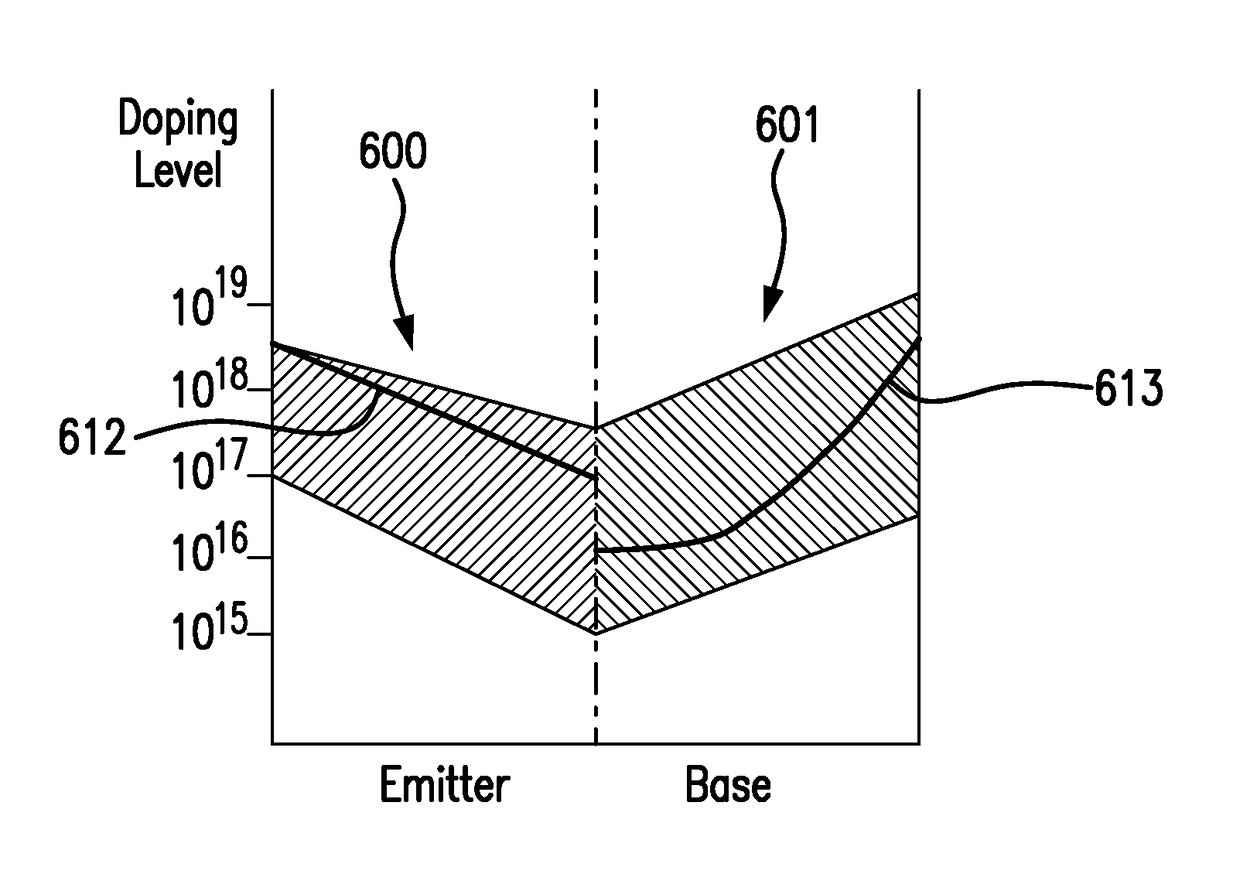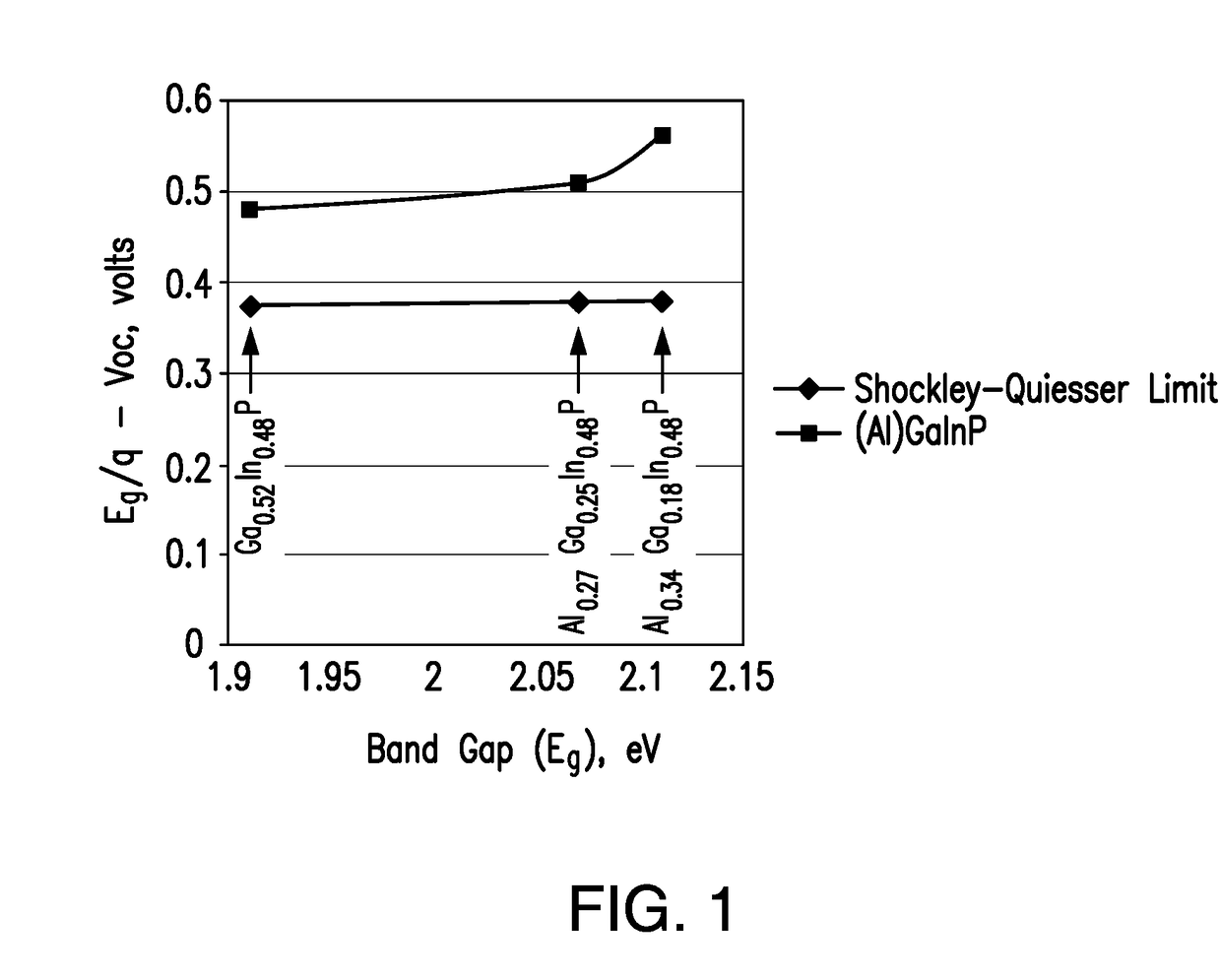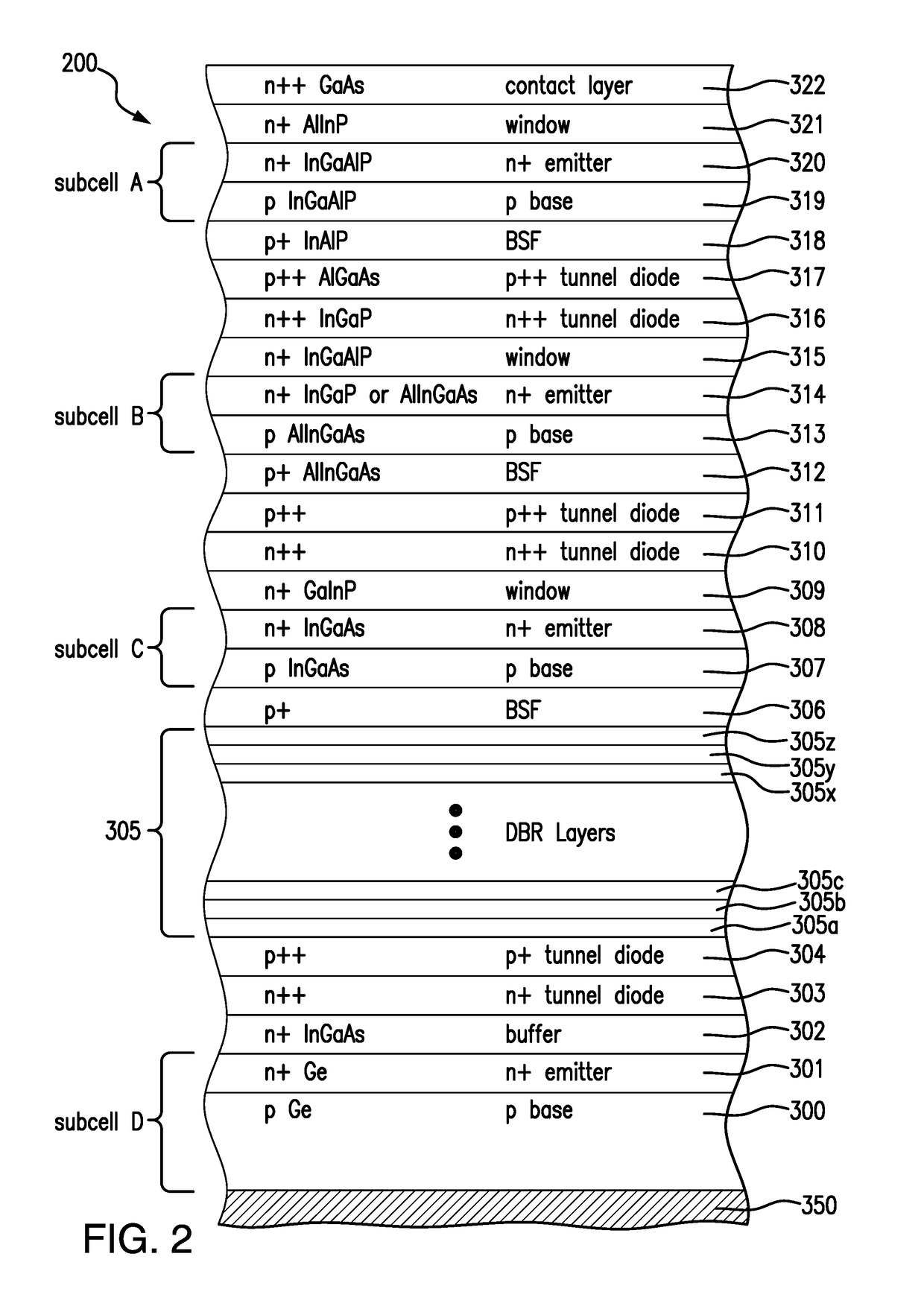Four junction solar cell and solar cell assemblies for space applications
a solar cell and assembly technology, applied in the field of solar cells and the fabrication of solar cells, can solve the problems of increasing the complexity of properly specifying and manufacturing, affecting the efficiency of solar cells, and affecting the performance of solar cells. achieve the effect of optimizing such efficiency, increasing the efficiency of multi-junction solar cells, and increasing photoconversion efficiency
- Summary
- Abstract
- Description
- Claims
- Application Information
AI Technical Summary
Benefits of technology
Problems solved by technology
Method used
Image
Examples
first embodiment
[0148]Turning to the multijunction solar cell device of the present disclosure, FIG. 2 is a cross-sectional view of a four junction solar cell 400 after several stages of fabrication including the growth of certain semiconductor layers on the growth substrate up to the contact layer 322 according to the present disclosure.
[0149]As shown in the illustrated example of FIG. 2, the bottom or fourth subcell D includes a growth substrate 300 formed of p-type germanium (“Ge”) which also serves as a base layer. A back metal contact pad 350 formed on the bottom of base layer 300 provides electrical contact to the multijunction solar cell 200. The bottom subcell D, further includes, for example, a highly doped n-type Ge emitter layer 301, and an n-type indium gallium arsenide (“InGaAs”) nucleation layer 302. The nucleation layer is deposited over the base layer, and the emitter layer is formed in the substrate by diffusion of dopants into the Ge substrate, thereby forming the n-type Ge layer ...
second embodiment
[0172]FIG. 4A is a cross-sectional view of a four junction solar cell 400 after several stages of fabrication including the growth of certain semiconductor layers on the growth substrate up to the contact layer 322, with various subcells being similar to the structure described and depicted in FIG. 2. In the interest of brevity, the description of layers 350, 300 to 304, and 306 through 322 will not be repeated here.
[0173]In the embodiment depicted in FIG. 4A, an intermediate graded interlayer 505, comprising in one embodiment step-graded sublayers 505a through 505z, is disposed over the tunnel diode layer 304. In particular, the graded interlayer provides a transition in the in-plane lattice constant from the lattice constant of the substrate to the larger lattice constant of the middle and upper subcells.
[0174]The graph on the left side of FIG. 4A depicts the in-plane lattice constant being incrementally monotonically increased from sublayer 505a through sublayer 505z, such sublay...
fourth embodiment
[0186]FIG. 5 is a cross-sectional view of a four junction solar cell 500 after several stages of fabrication including the growth of certain semiconductor layers on the growth substrate up to the contact layer 322, with various subcells being similar to the structure described and depicted in FIG. 3.
[0187]In this embodiment, both a grading interlayer 505 and a DBR layer 305 are disposed between subcell C and subcell D. The layers 450, 400 to 404, 504 to 507 and 306 through 322 are substantially similar to that of FIG. 2 and FIG. 4A or 4B and their description need not be repeated here.
[0188]In this embodiment, Distributed Bragg reflector (DBR) layers 305 are then grown adjacent to and over the alpha layer 507 (or the metamorphic buffer layer 505 if layer 507 is not present). The DBR layers 305 are arranged so that light can enter and pass through the third solar subcell C and at least a portion of which can be reflected back into the third solar subcell C by the DBR layers 305. In t...
PUM
 Login to View More
Login to View More Abstract
Description
Claims
Application Information
 Login to View More
Login to View More - R&D
- Intellectual Property
- Life Sciences
- Materials
- Tech Scout
- Unparalleled Data Quality
- Higher Quality Content
- 60% Fewer Hallucinations
Browse by: Latest US Patents, China's latest patents, Technical Efficacy Thesaurus, Application Domain, Technology Topic, Popular Technical Reports.
© 2025 PatSnap. All rights reserved.Legal|Privacy policy|Modern Slavery Act Transparency Statement|Sitemap|About US| Contact US: help@patsnap.com



